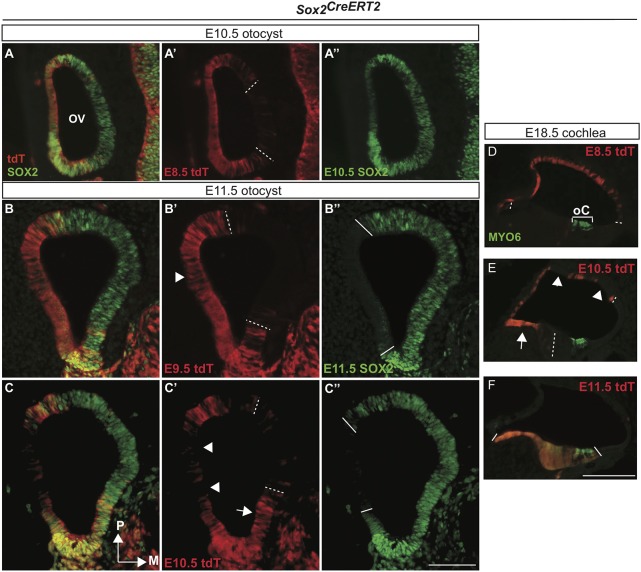Fig. 9.
Simultaneous fate mapping and expression of SOX2 demonstrate a dramatic shift from nonsensory to sensory progenitors in the otocyst between E8.5 and E11.5. (A-C″) Sections at indicated ages demonstrating previous fate-mapped SOX2 expression (tdT; red) versus current SOX2 expression (green). The SOX2 expression domain switched from a lateral, primarily nonsensory associated tdT/SOX2 domain at E8.5/E9.5 (A-B′) to a medial, sensory-associated domain of SOX2 protein expression at E11.5 (A″,B″,C″). (B′) The contribution of E9.5 SOX2-expressing cells labeled by tdT/SOX2 decreased in the lateral otocyst (arrowhead), and increased medially (B″). At E10.5, the contribution of tdT/SOX2 to nonsensory progenitors in the cochlear roof decreased (arrowheads in C′ and E) and began to contribute to cochlear floor nonsensory progenitors (arrows in C′ and E). (D-F) Demonstration of how the pattern of early SOX2 expression in the otocyst contributes to the mature cochlea. The region in the posterior medial otocyst negative for tdT/SOX2 tdT early on (dashed lines in A′,B′,C′) probably contributes to the future organ of Corti (bracket in D), which was positive by E11.5 (solid lines in B″,C″,F). M, medial; OV, otic vesicle; P, posterior. Scale bars: 100 µm.

